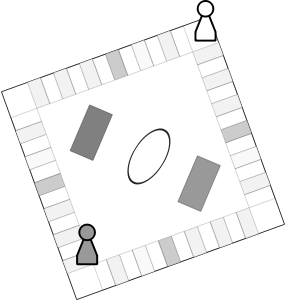Abstract
Understanding structural factors in social life is one of the top learning goals of a course in sociology (Persell 2010). Still, students often react defensively to discussions about structural inequality (Davis 1992; Watt 2007). Simulation activities may be a means of creating a safe environment for engaging people in these dialogues (Dorn 1989). This...Download this resource to see full details. Download this resource to see full details.
Details
- Subject Area(s):
- Stratification/Mobility
- Resource Type(s):
- Class Activity
- Class Level(s):
- Any Level
- Class Size(s):
- Small
Usage Notes
The Game of Social Life is a poverty simulation board game designed for use in small group settings. It is ideal for environments in which there are fewer than 30 players per facilitator. Room space and configuration is required for participants to play the board game. The room should be set up with tables or desks pushed together so that there is room to...Download this resource to see full details. Download this resource to see full details.
Learning Goals and Assessments
Learning Goal(s):
- Describe structural factors that contribute to poverty.
- Question assumptions of meritocracy and individualistic explanations for poverty
- Evaluate the role of economic privilege in one’s own life and in one’s own society
Goal Assessment(s):
- Responses during a written reflection assignment and/or students’ verbal responses during the guided discussion can be used to assess students’ ability to describe structural factors that contribute to poverty.
- Responses during a written reflection assignment and/or students’ verbal responses during the guided discussion can be used to assess students’ ability to question assumptions of meritocracy and individualistic explanations for poverty.
- Responses during a written reflection assignment and/or students’ verbal responses during the guided discussion can be used to assess students’ ability to evaluate the role of economic privilege in one’s own life.
When using resources from TRAILS, please include a clear and legible citation.


